Specialized Roubaix Sport review
Clever engineering makes for a highly comfortable ride – but at a price
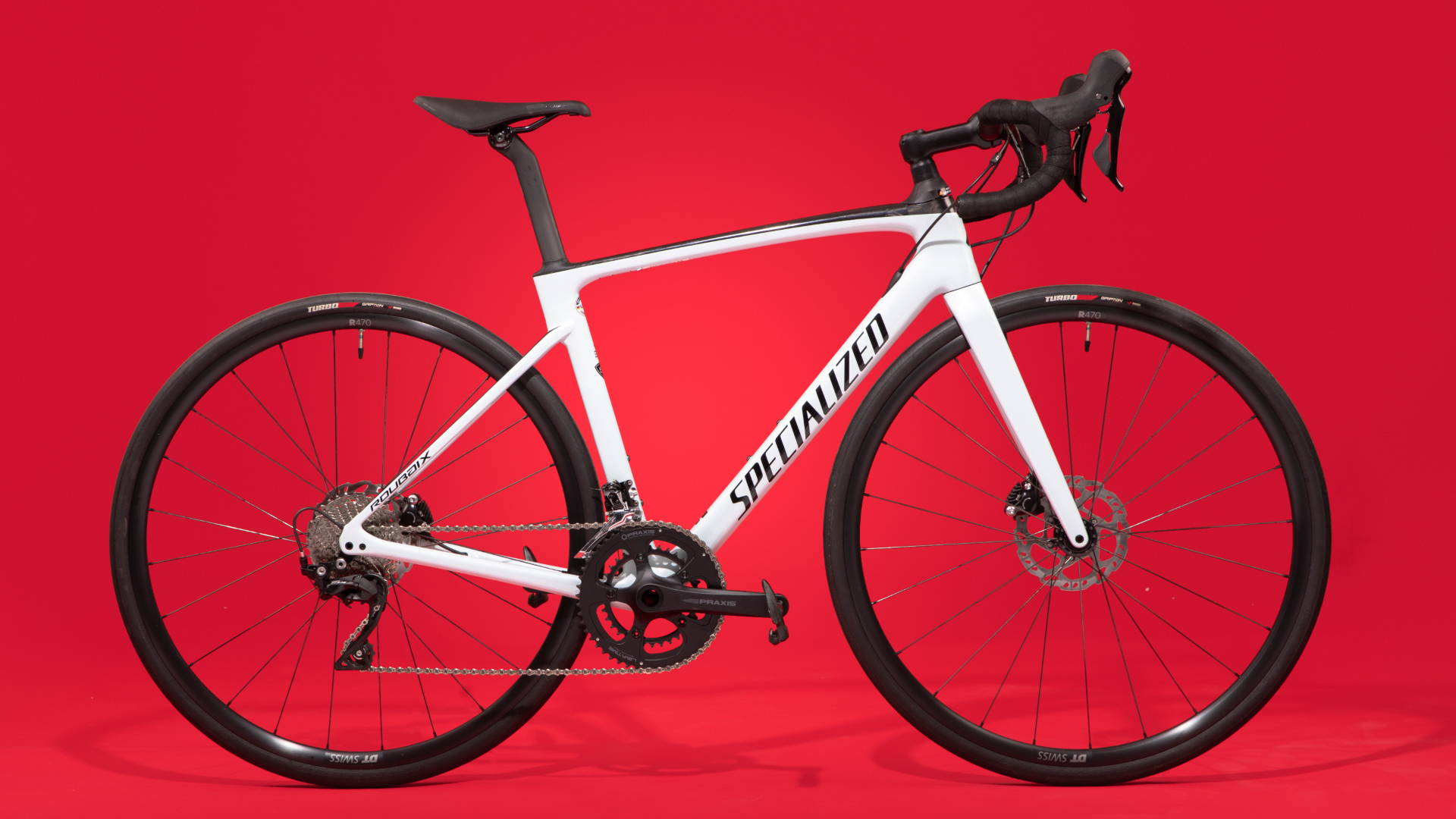
Thanks to the combination of Future Shock front suspension and a very flexible seatpost, the Specialized Roubaix Sport is a highly comfortable bike for endurance road riding. As a lower tier model, it misses out on the ability to lock out that 20mm of travel, which leads to incessant bobbing on climbs and when putting in harder efforts. This makes the Roubaix Sport best suited to longer, endurance efforts. However, simply opting for a bike with wider tyres gives much the same result in term of comfort and can be a much cheaper alternative.
-
+
Relaxed, comfortable position
-
+
Vibration absorbing and dampening
-
-
Front shifting with Praxis crankset isn’t as good as on full 105
-
-
Future shock 1.5 can’t be locked out
-
-
Hover handlebars reduce space to mount lights, head units and other accessories
-
-
No mudguard mounts
You can trust Cycling Weekly.

The Specialized Roubaix is built to be one of the best bikes for handling rough terrain and remaining comfortable over long distances. The proof of the pudding is very much in the eating, with a total of seven cobble-munching wins over the last 15 years at the Queen of the Classics, Paris–Roubaix.
Naturally, the platform has been refined over the years, benefiting majorly from a lot of clever tech developments. As a result, although the Roubaix Sport here is technically the 'entry level' model, it comes in at £2,900 / $3,200 with the prices increasing through the range.
The construction: Specialized Roubaix Sport
The frame
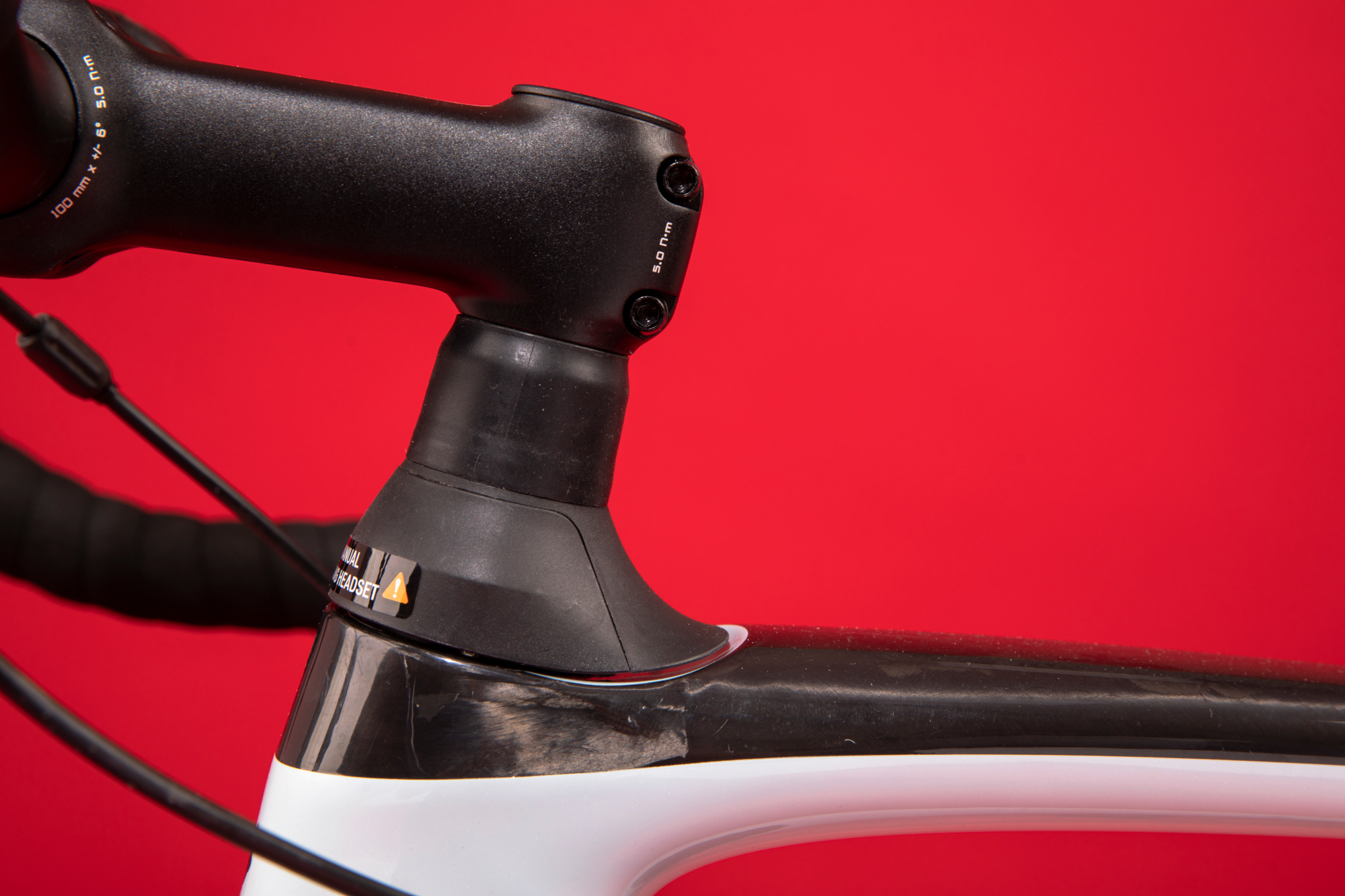
The most distinctive features of the Specialized Roubaix Sport are the vibration dampening systems, so that's where we'll start. At the front, the Roubaix benefits from Specialized's Future Shock 1.5, which allows for 20mm of travel between the handlebars and the head tube to help soak up the impacts.
Although the profile of the Future Shock is very discreet – looking at first glance just like a normal steerer column, it does mean you can't just shuffle spacers below and above the stem to adjust the stack height.
As it is, there are two set positions the Future Shock allows you to switch between – any finer-tuned adjustments would have to be made by swapping in a stem with a different angle of rise. Fortunately, though, swapping stems is very straightforward, with a standard 1 1/8in fitting with the use of a provided shim.
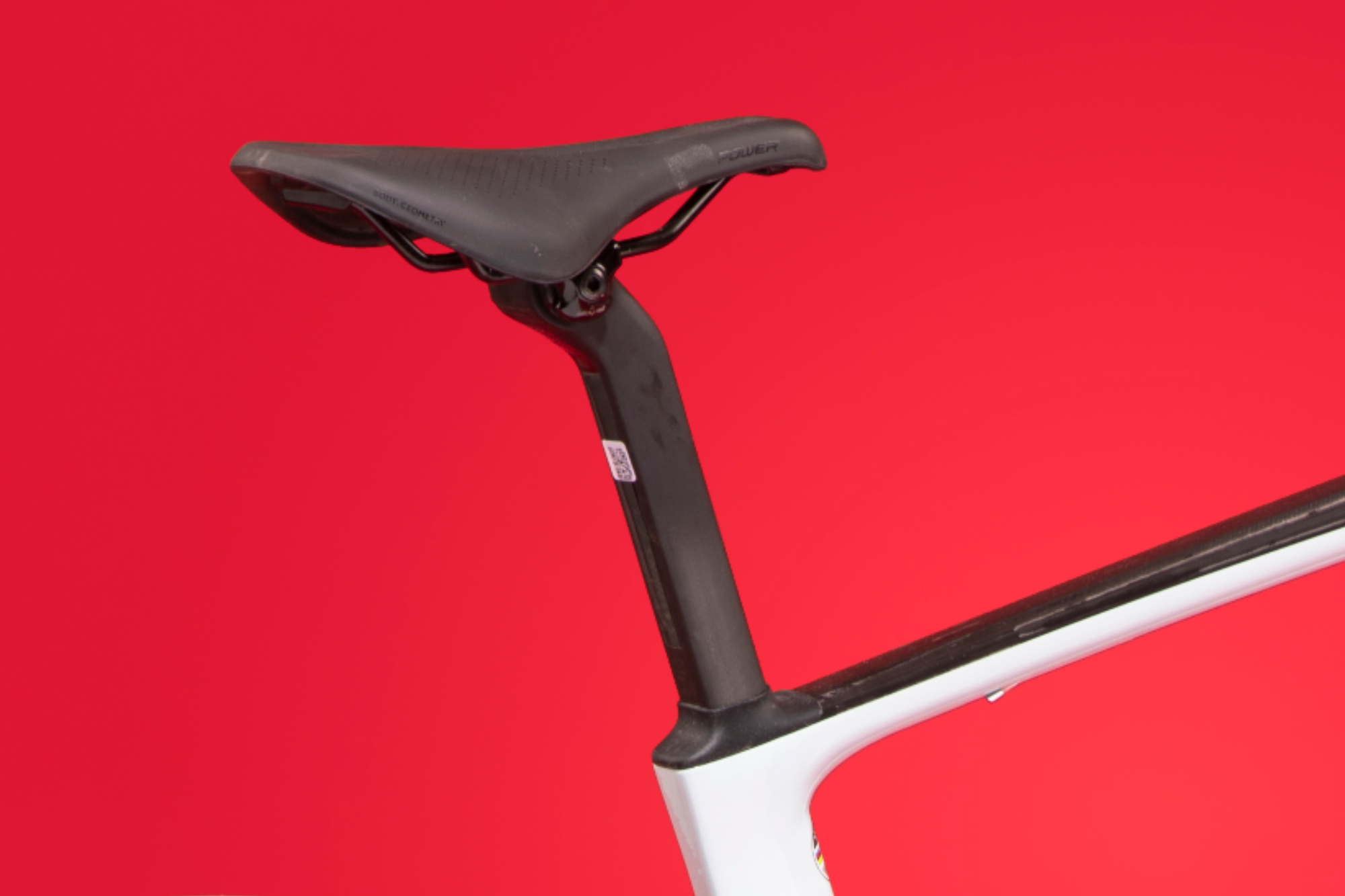
Rather than engineer any form of suspension into the rear end, Specialized has gone with clamping the seatpost lower down, to allow for more vibration dampening flex. To reduce the amount of post on show, the clamp is hidden a few centimetres down inside the seat tube, making for a more recognisable profile but increasing the faff of saddle height adjustments.
Both the frame and fork benefit from a carbon construction and the tyre clearances stand at a generous (for an endurance road bike) 33mm. There aren't any mudguard mounts but the bottom bracket is threaded rather than press fit, so there is a nod to user friendliness there.
With a stack of 585mm and a 376mm reach in a size 54cm, the bike is notably tall and short – more so than even some gravel bikes. However, with a head angle of 72.75 degrees and chainstays of 415mm, the geometry does hint at a more responsive and sprightly ride than even the most speed-oriented gravel bikes.
Although naturally the numbers are still a little more relaxed than you tend to see on out-and-out aero or climbing race bikes.
The components
The groupset spec'd is mostly Shimano 105 but with a Praxis Alba crankset to help keep the costs down and enable it to limbo underneath the £3K mark.
In its entirety, Shimano’s 105 groupset is an excellent combination of functionality and reasonably low price, with fast and responsive shifting as well as powerful hydraulic disc brakes.
With the Praxis Alba crankset, some of that solidity and speed of the front shift does get sacrificed. However, the performance at the rear and of the disc brakes remains at the high level we've come to expect.
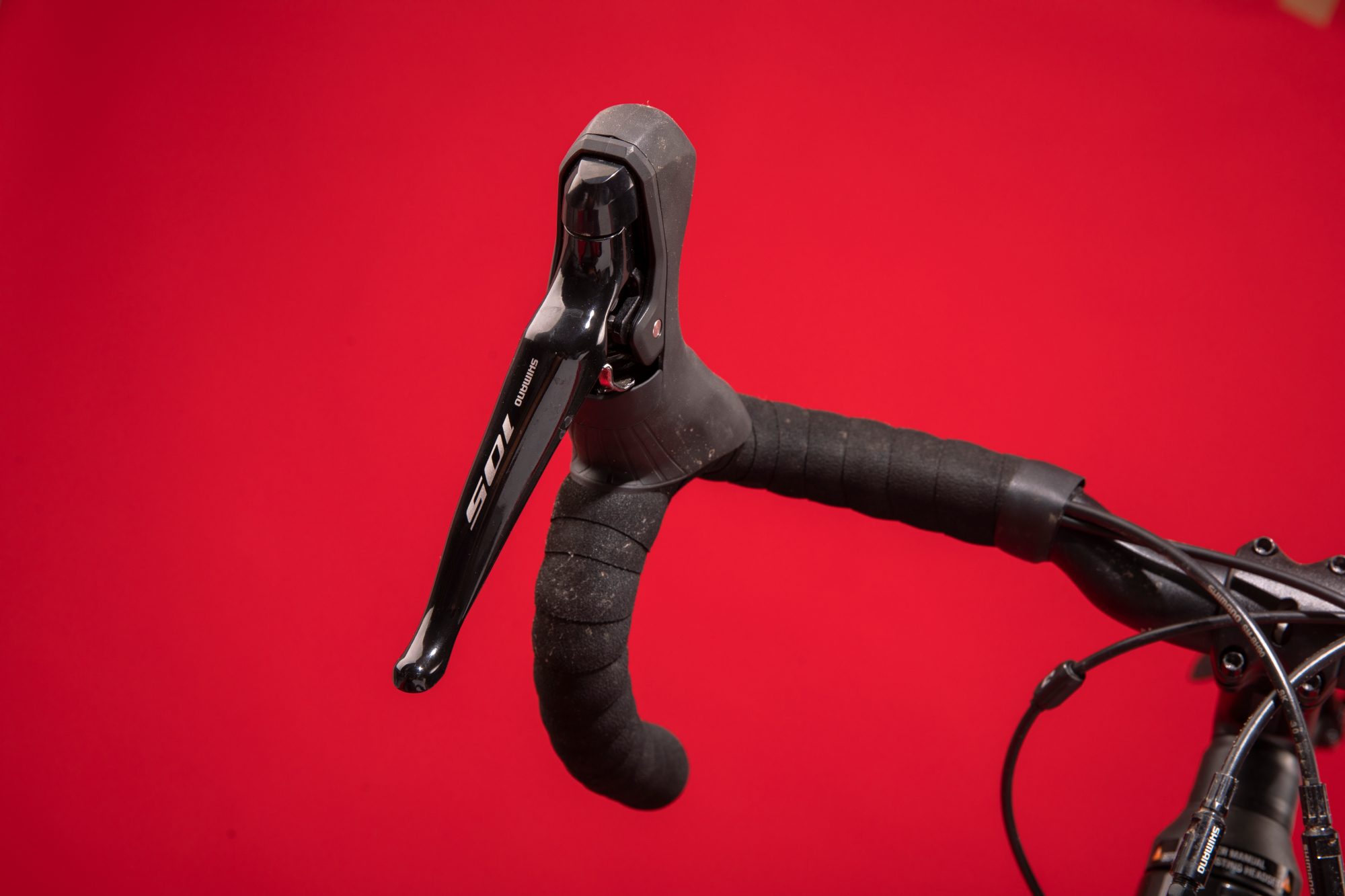
The compact 50/34t chainrings provide a good range of gears for most road riding situations, with the pairing of a 11–34t cassette giving a friendly 1:1 bottom gear and relatively close jumps around the middle gears, but no single-tooth jumps between the smallest sprockets.
The wheels are a set of robust alloy DT Swiss R470 with a 20mm internal width and 24 J-bend spokes. Although not a performance wheelset, they offer a good blend between durability and still being sprightly enough not to detract from the ride. The tyres are Specialized's own Turbo Pros and in 28mm widths.
The finishing kit
The Roubaix Sport gets treated to the same S-Works Pave seatpost and is specifically designed to help increase compliance – beyond just what clamping the post lower down provides. Perched on top is a Specialized Power saddle with a short nose and large central cutout that happens to suit me quite well.
Up front, the Hover Handlebars give an added 15mm of rise, sweeping upwards soon after the stem clamp. It’s a design feature which I can see as being highly useful as a way of clawing back some stack on a bike with a chopped-down steerer.
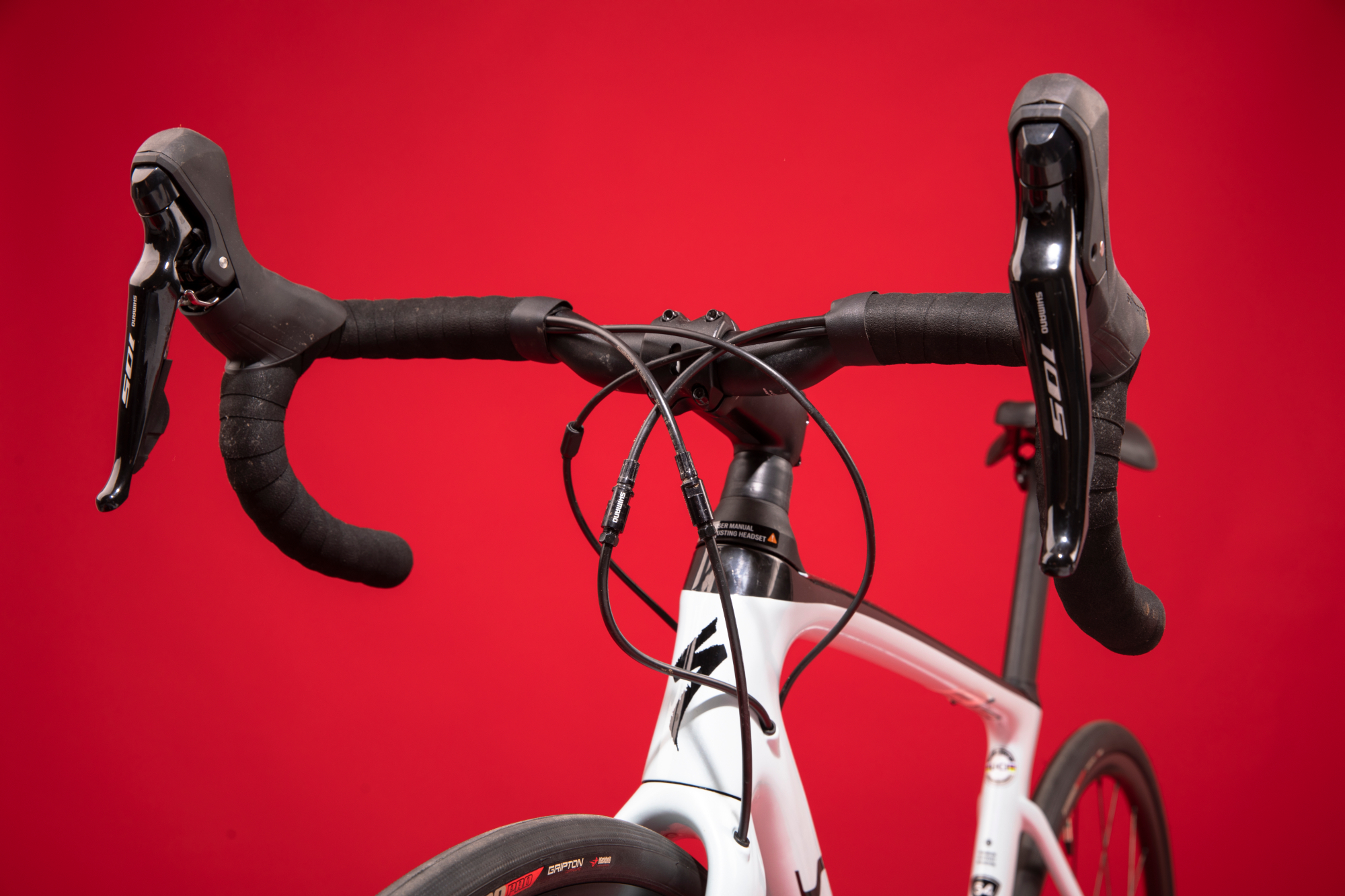
But it does mean there is much less space for mounting various handlebar accessories, such as a bar bag with a head unit and light. A standard in-line handlebar would be more practical as a stock setup – with extra rise provided by a more sharply angled stem, if needed.
Of course, there will be those who much prefer the aesthetics of a stem that lies parallel to the ground – rather than pointing skywards – and would really appreciate the Hover Bar for that aspect. But aesthetics is a more personal matter than functionality.
The ride
I found the bike a comfortable fit with quite an upright position, really putting you in the mood and the mindset for a long distance, endurance ride.
Traversing broken and pitted sections of road, the Future Shock provided an impressive degree of comfort, isolating me from the worst of the bumps and smoothing out the smaller chatter without any perceptible stiction; it was impressively active.
Likewise, the flex of the seatpost sounded out vibrations from coarser tarmac sections quite smoothly, although it didn’t do much for larger impacts as a true suspension seatpost would, such as Canyon’s VCLS 2.0 CF or the Cane Creek Thudbuster.
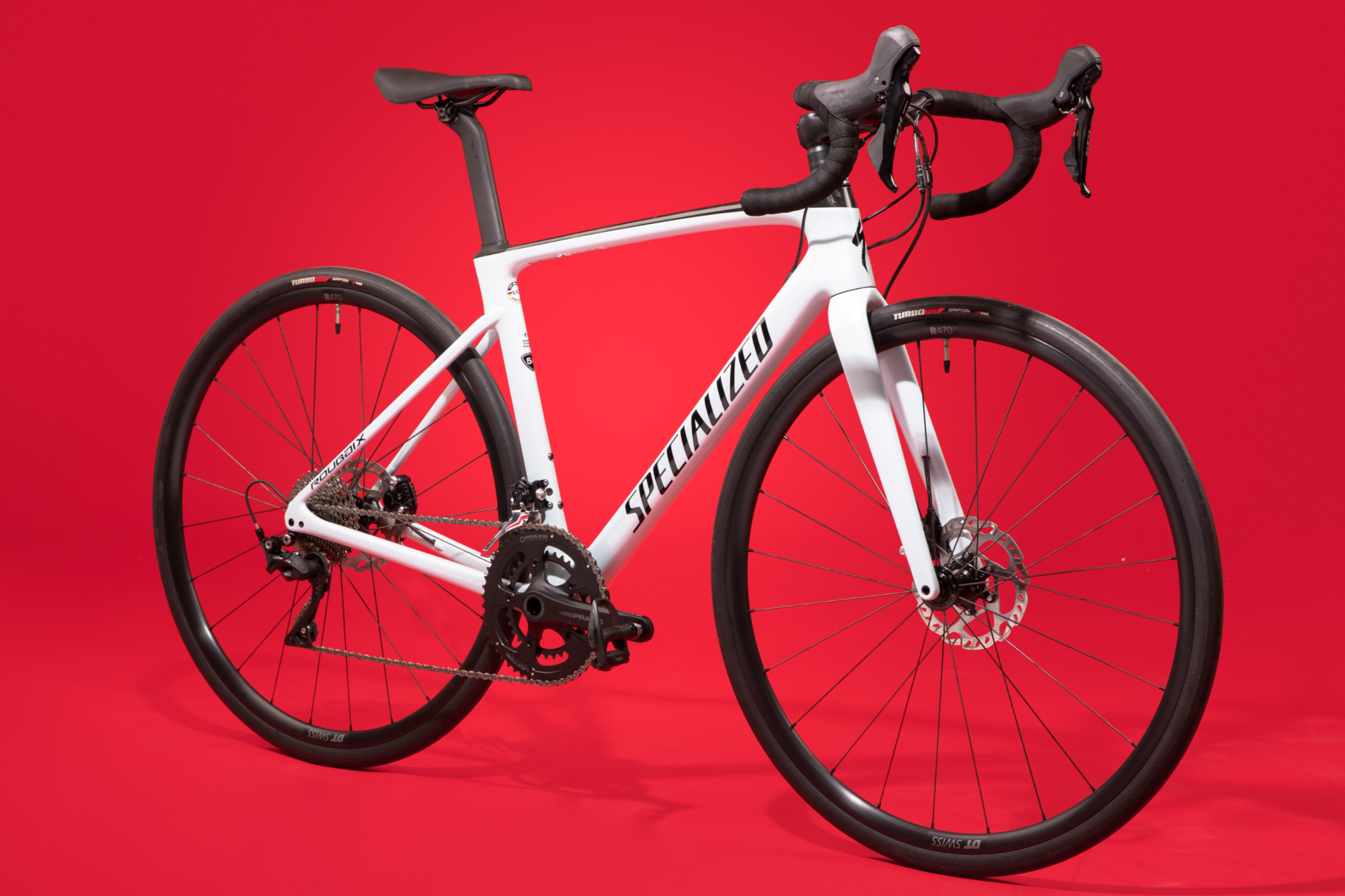
However, it was only really road endurance rides that I found the Roubaix Sport well suited to. Tempo and threshold efforts were frustrating to maintain with the lack of any single tooth jumps – I would constantly be in either too hard or too easy a gear than I needed.
Of course, that’s a simple enough fix, just swapping out the 11-34t cassette for an 11–32t would provide single tooth jumps until the step from 14 to 16t, which is much more manageable. It was the Future Shock itself that was the greater issue, bobbing incessantly through any out-the-saddle effort – whether sprinting or just steadily climbing.
Some endurance bikes can double as a durable workhorse – naturally not fast like a race bike – but great for any kind of training effort and enabling you to save your race bike for what it’s intended for. As it is, unfortunately, the Roubaix Sport is not among those.
The value for money isn’t especially great either, as a similar level of comfort can be found by simply opting for a bike with clearances for wider tyres – while the Praxis crankset really hampers shifting compared to full 105.
For instance, the Giant Defy Advanced 2 (£2,299 / $2,680) with its clearance for up to 35mm tyres could make a good alternative to the Roubaix Sport set up with 28mm tyres. While the Canyon Grail (£2,449.00 / $2,699.00) serves as a foil to the Roubaix Sport if it were maxed out with its full 33mm rubber.
In each case, the secondary benefits that wider tyres bring are – in many cases – more desirable than the combination of the Future Shock with skinnier tyres. Although comfort may be comparable, wider tyres offer increased grip and puncture protection which is only a good thing.
With the Roubaix Sport not being especially well suited to harder and faster riding with its bobbing front end, I think it's fair to say that the slight increase in rolling resistance from wider tyres is largely immaterial in the use case.
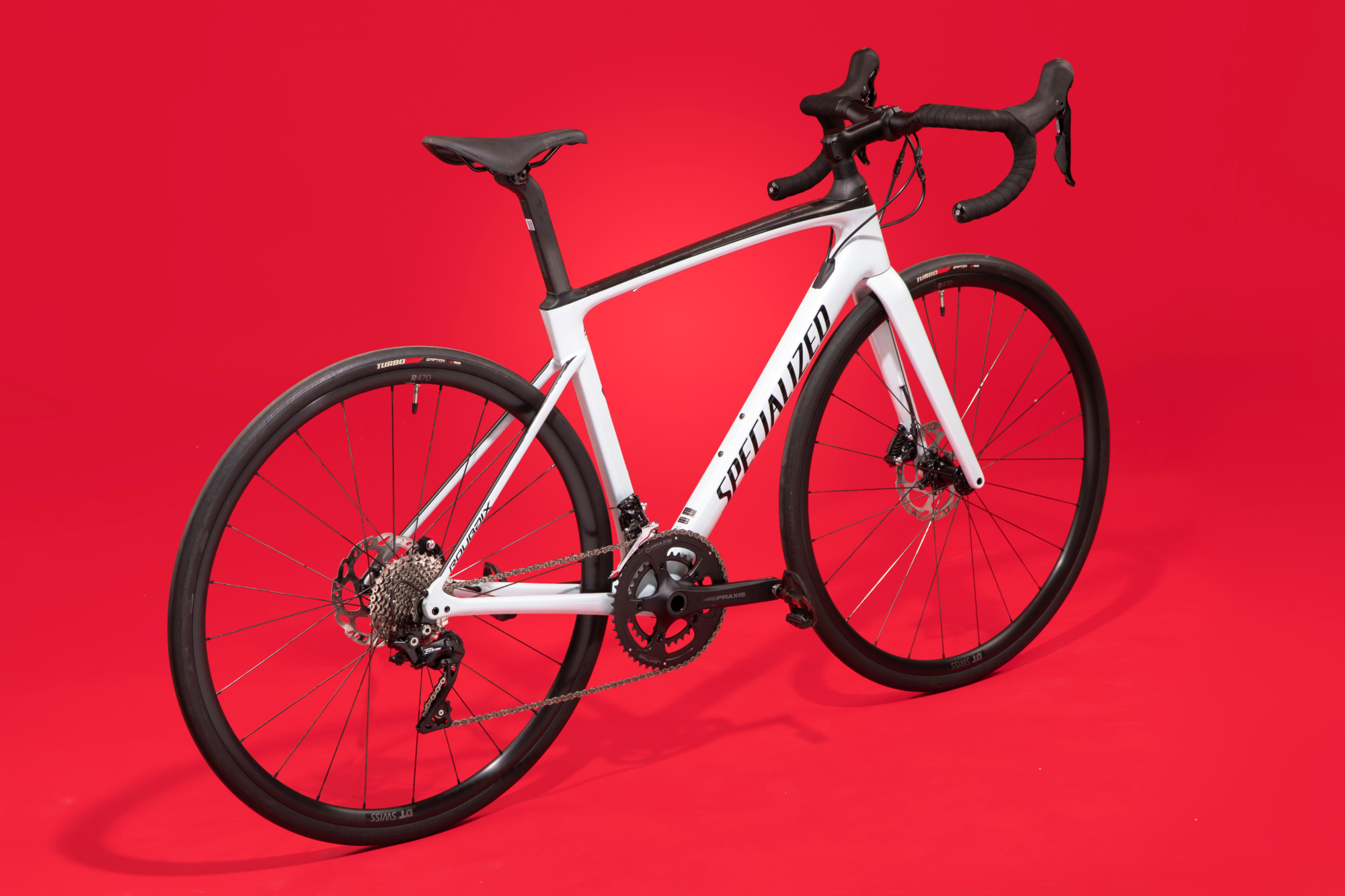
To be fair, the Roubaix models start to make much more sense higher up the range, such the Roubaix Expert (£5,000 / $5,000). This bike gets a proper Shimano crankset and offers a lockout function to the Future Shock.
In that spec, you would get to enjoy that holy grail of speed and comfort that the Future Shock and fast 28mm tyres promises – being able to keep the power down while pushing up climbs without distraction from the bouncy front end, thanks to the lockout. It'd open up the possibility of working some interval sessions into your training rides too.
But as it is, the Roubaix Sport model – with its bobbing Future Shock – is only really best suited for longer, steadier rides. It lacks mudguard mounts, which is a bit of a knock to its endurance potential in wetter climates at least.
Value
At £2,900, the Specialized Roubaix Sport is around the same price as the Trek Domane SL 5 (£2,850 / $3,129.99) of the same model year. The Domane comes with a full 105 groupset but while it does feature Trek's own form of front and rear dampening, it doesn’t quite match the 20mm of suspension offered by the Roubaix.
At £2,299 / $2,680, the Giant Defy Advanced 2 is significantly cheaper and doesn't have a proprietary suspension mechanism – plus with the capacity to take up to 35mm tyres, it offers about the same level of comfort as the Roubaix with the stock 28mm tyres.
Verdict
The Specialized Roubaix Sport is a highly comfortable bike for endurance road riding, thanks to its combination of Future Shock front suspension and a highly flexible seatpost. However, the lack of a lockout function in this model means the front end bobs continually when riding out the saddle.
The higher tier models – with the lockout function – can offer enhanced comfort on fast 28c tyres and without the bounciness on the climbs or in training intervals. But just regarding the Roubaix Sport, it would be much cheaper – and would deliver a better riding experience – to simply get a better value bike that can fit wider tyres.
Specs
- Frame: FACT 10R carbon, threaded BB, 12x142mm thru-axle, flat-mount disc
- Fork: Future Shock 1.5 w/ Smooth Boot, 12x100mm thru-axle, flat-mount disc
- Handlebars: Specialized Hover Comp, Alloy, 125mm Drop, 75mm Reach w/Di2 Hole
- Saddle: Body Geometry Power Sport, steel rails
- Shifters: Shimano 105 R7020, hydraulic disc
- Derailleurs: Shimano 105 R7000
- Crankset: Praxis Alba
- Wheelset: DT Swiss R470 rim, 20mm internal width, tubeless ready, 24h, Specialized full sealed bearing thru axle hub, centerlock disc
- Tyres: Specialized Turbo Pro, 700x28mm
Is Specialized Roubaix worth it?
In our view, the entry level “Sport” model of the Specialized Roubaix ultimately isn’t worth the price. Missing out on the lock-out function that the higher tier models benefit from means the front end bobs incessantly on climbs and when putting in an out-the-saddle effort. Achieving comfort through a wider tyred bike is much more cost effective and offers a better riding experience than skinnier tyres with suspension.
Is the Roubaix sport a good bike?
In terms of the handling, geometry and comfort, the Roubaix Sport rates quite well. However it delivers a poor spec for the price, with the slow shifting Praxis chainrings, and the lack of a lock-out function on the Future Shock means the front end bobs incessantly on the climbs and in out-the-saddle efforts. There are bikes which deliver similarly good handling and comfort for more much less – and the experience of riding with simply wider tyres is much better than the combination of skinny ones with suspension.
Is Roubaix specialized fast?
The geometry and components put you in a more upright position for endurance riding, which – while comfortable – isn’t particularly aerodynamic or fast. Set up with a more aggressive stem and a standard set of handlebars, it can be made quite rapid. The Future Shock means you can ride in comfort over rougher roads, while still running skinnier race tyres. However, with the Roubaix Sport lacking a lock-out function, it does bob frustratingly on the climbs and in harder efforts.
How much does the Roubaix sport weigh?
On our scales and in a size 54cm, the Roubaix Sport came in at 8.73kg or 19.2lb.

Thank you for reading 20 articles this month* Join now for unlimited access
Enjoy your first month for just £1 / $1 / €1
*Read 5 free articles per month without a subscription

Join now for unlimited access
Try first month for just £1 / $1 / €1
Get The Leadout Newsletter
The latest race content, interviews, features, reviews and expert buying guides, direct to your inbox!

After winning the 2019 National Single-Speed Cross-Country Mountain Biking Championships and claiming the plushie unicorn (true story), Stefan swapped the flat-bars for drop-bars and has never looked back.
Since then, he’s earnt his 2ⁿᵈ cat racing licence in his first season racing as a third, completed the South Downs Double in under 20 hours and Everested in under 12.
But his favourite rides are multiday bikepacking trips, with all the huge amount of cycling tech and long days spent exploring new roads and trails - as well as histories and cultures. Most recently, he’s spent two weeks riding from Budapest into the mountains of Slovakia.
Height: 177cm
Weight: 67–69kg
-
 'This is the marriage venue, no?': how one rider ran the whole gamut of hallucinations in a single race
'This is the marriage venue, no?': how one rider ran the whole gamut of hallucinations in a single raceKabir Rachure's first RAAM was a crazy experience in more ways than one, he tells Cycling Weekly's Going Long podcast
By James Shrubsall Published
-
 Full Tour of Britain Women route announced, taking place from North Yorkshire to Glasgow
Full Tour of Britain Women route announced, taking place from North Yorkshire to GlasgowBritish Cycling's Women's WorldTour four-stage race will take place in northern England and Scotland
By Tom Thewlis Published
-
 Positive signs for UK bike industry as Halfords cycling sales grow
Positive signs for UK bike industry as Halfords cycling sales growRetailer admits that the impact of Donald Trump's tariffs remains to be seen
By Tom Thewlis Published